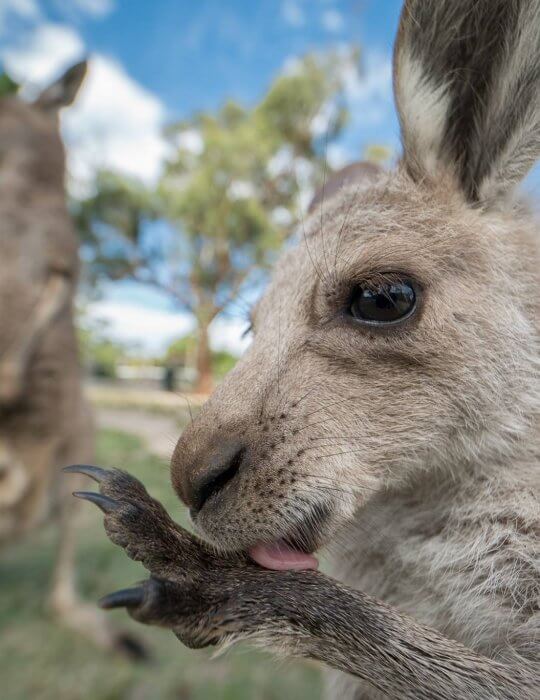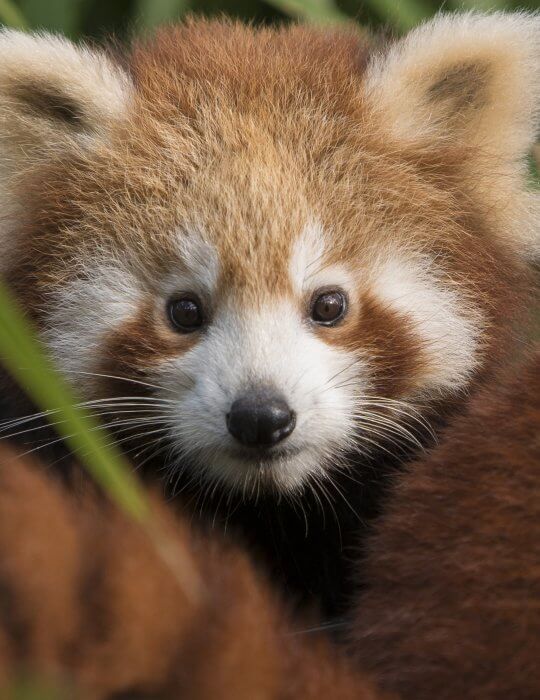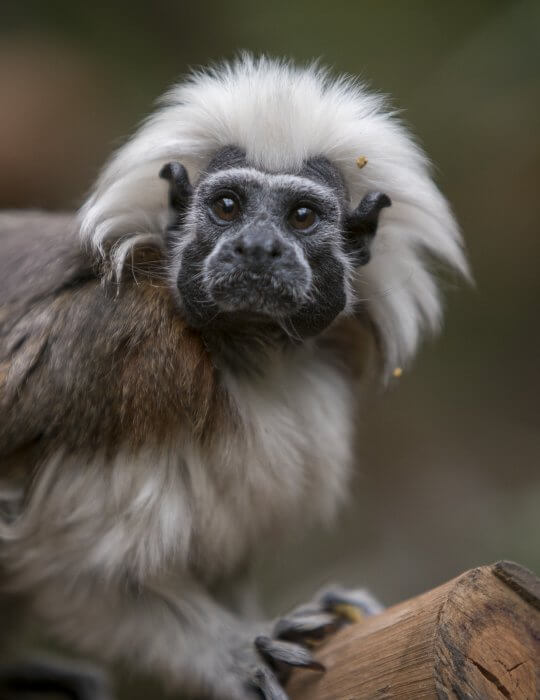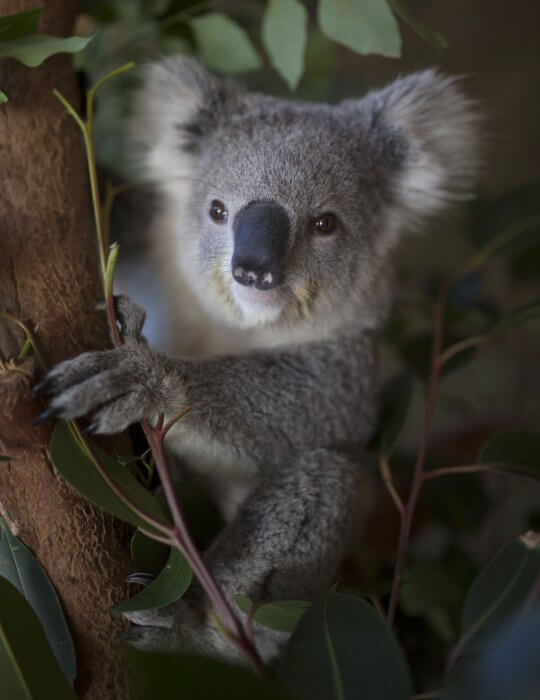Eastern Grey Kangaroo
Symbio is home to a large mob of Kangaroos and Wallabies and is the only place in Sydney where you can feed and pat a Kangaroo or Wallaby on lush green grass, which makes the perfect setting for your Aussie animal experience.
Throughout the year you can expect to see joeys, both in pouch and hopping around, with the Summer Months typically being when they first venturing out to discover the world outside of the pouch.
Upon entry to Symbio you can choose to purchase animal feed which you can hand-feed to all our roo’s.
About
The Eastern Grey Kangaroo is the second largest and heaviest living marsupial and native land mammal in Australia. They are typically more placid and smaller in stature than the Red Kangaroo.
They belong to a family of marsupials known as macropods. They have hind legs that are larger than their forelimbs.
Their hind feet are large and powerful, their long muscular tail is used for balance when hopping and as a fifth limb when movements are slow. The fur is a light grey colour except the face which is darker. A dark tip of fur is also found on the tail.
Eastern grey kangaroos can be found living on the open grassland and forested coastal areas of Eastern Australia and Tasmania and are the ones which you will most commonly see around Sydney in wild.
Diet
The Eastern Grey Kangaroo is predominantly a grazing animal with specific food preferences. They are herbivorous, favouring grasses but will eat a range of plants, including in some cases, fungi. With the grasses they prefer to eat young green shoots high in protein.
Dry grass is difficult for them to digest. Being nocturnal, large groups called ‘mobs’ will gather at dusk to feed where food is most abundant. Breeding is continuous throughout the year and reaches a peak in summer.
The newborn ‘joey’ which weighs less than one gram, is born thirty six days after mating. It climbs unaided into the pouch and shortly afterwards attaches to one of the four teats. The young kangaroo is raised in the pouch until it can survive outside. At about 9 months the joey will begin to leave the pouch but continues to suckle from time to time. A joey becomes independent at about 18 months of age.
Fun Facts
- They are the second largest marsupial in the world, with the large, muscular males often growing well over 2 metres in length from nose to tail.
- Eastern grey kangaroos are mainly nocturnal. They sleep during the day in the shade of trees and shrubs, coming out at night to graze on grass. They are also very social animals, living in mobs of up to 20.
- The way that they hop is a very efficient and energy saving way of travelling in hot Australian weather, and have been recorded as travelling as fast as 64 kmh, leaping over 9 metres long and over 1.8 metres high.
- One of the most incredible things about kangaroos is that when they are first born, they are about the size of a jellybean. They are born tiny, blind and hairless and have to climb up through the mother’s fur to the pouch where they attach themselves to a teat and stay there for a long time, growing quickly until they finally appear after six months. It’s a very dangerous journey for such a small baby and it ensures that only the strongest joeys survive.
- Eastern grey kangaroos are one of the few animals that have increased in number since the arrival of Europeans. They are found in open forest and grasslands throughout eastern Australia and are abundant in number.
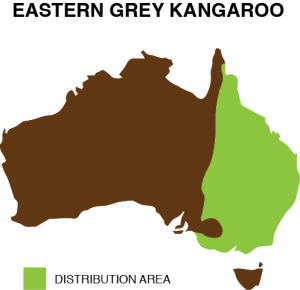
Distribution
Grey Kangaroos have wide and almost continuous distribution between the inland plains and the coast where the annual rainfall is more than 250mm. The Eastern Grey Kangaroo is found over most of the eastern states including Tasmania. They are also found at all altitudes in woodlands up to subalpine areas.
Habitat
They are found in habitats ranging from semi-arid mallee scrub through to woodlands, some farmland areas with remnant vegetation and forest. They tend to favour denser scrubs and forests.
Feeding Kangaroos
Gallery
Meet our animals


